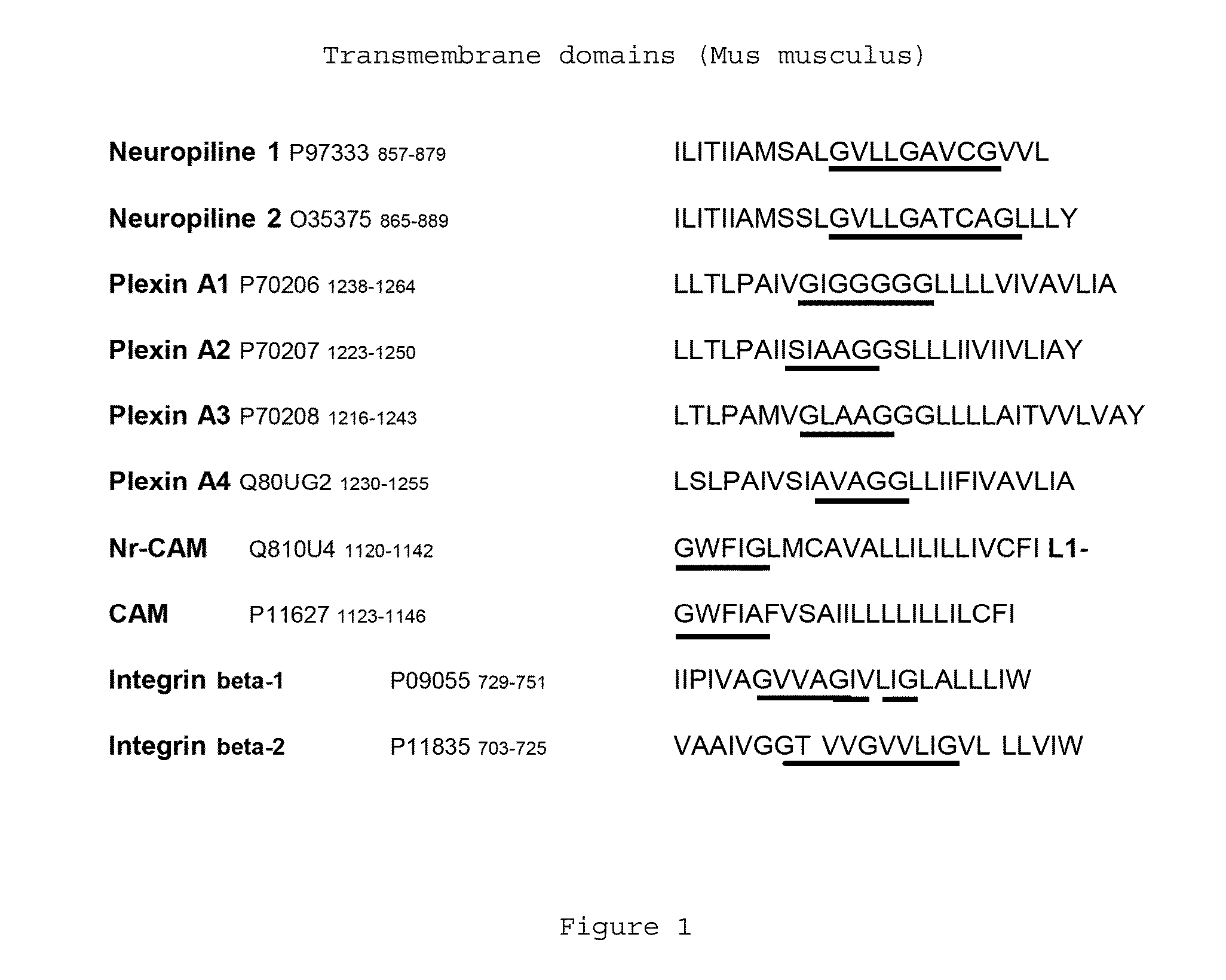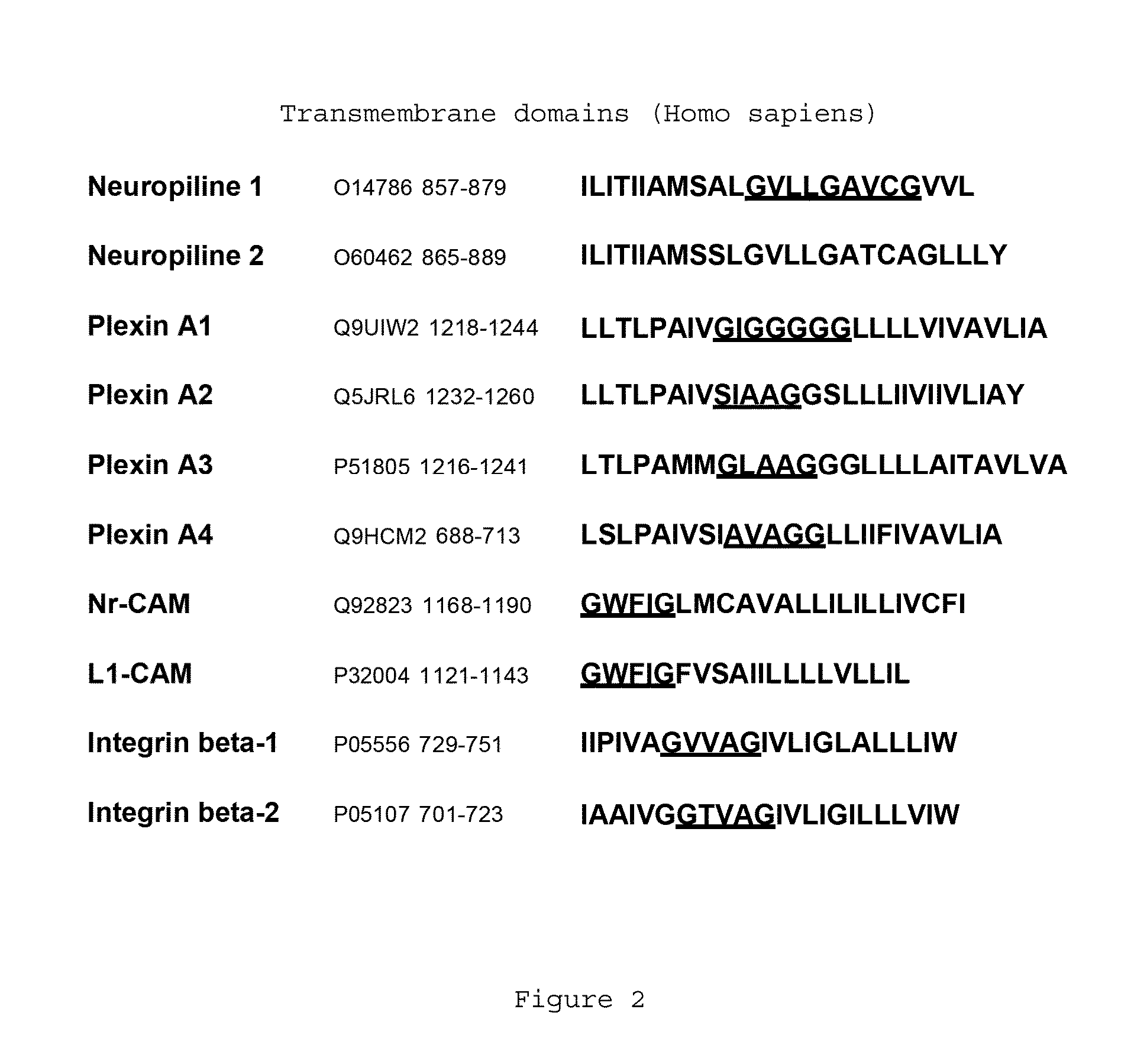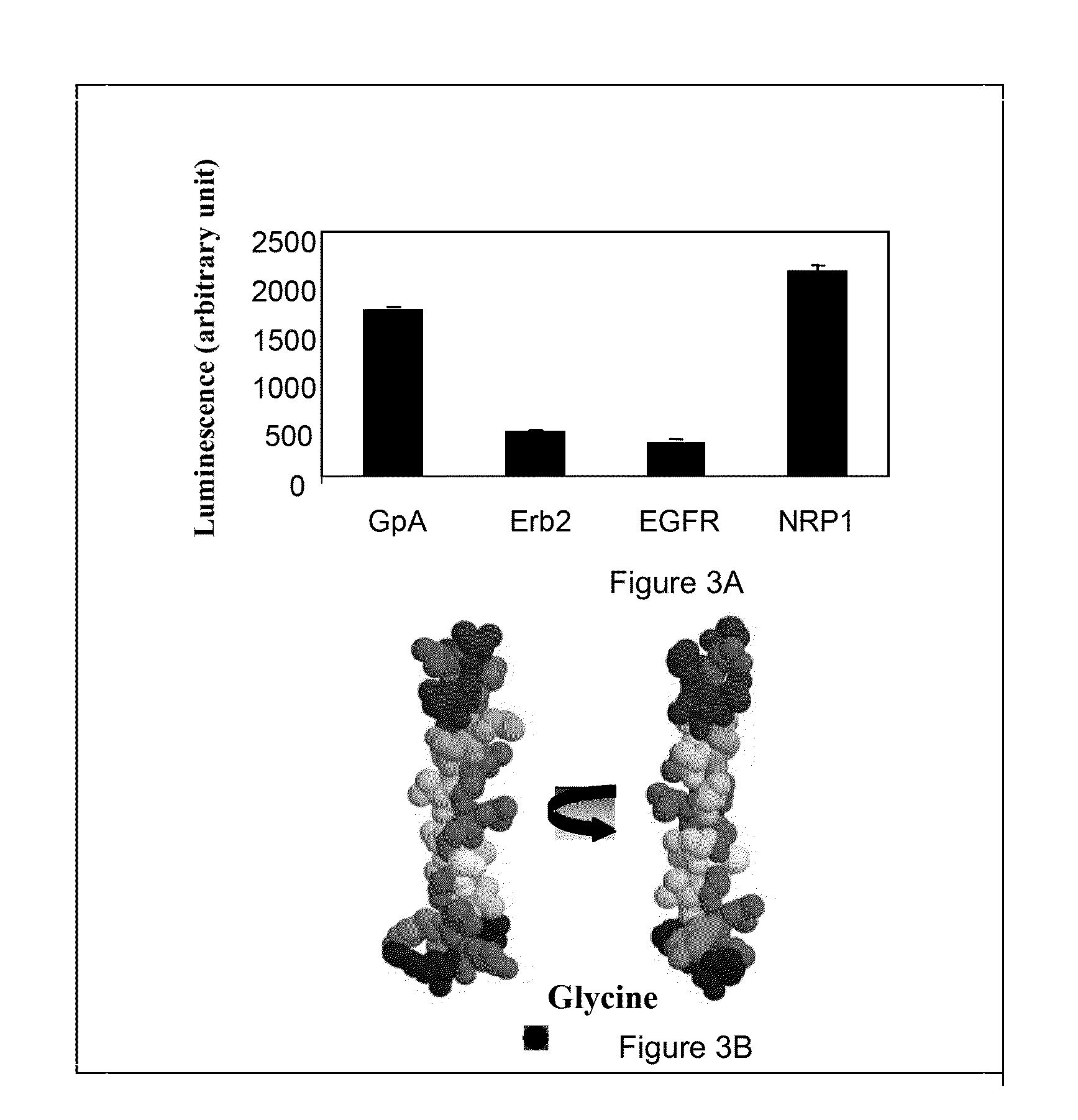Peptidic antagonists of class iii semaphorins/neuropilins complexes
a technology of semaphorins and peptide antagonists, which is applied in the field of peptidic antagonists of class iii semaphorins/neuropilins complexes, can solve the problems of guidance errors and disruption of sema 3a signaling
- Summary
- Abstract
- Description
- Claims
- Application Information
AI Technical Summary
Benefits of technology
Problems solved by technology
Method used
Image
Examples
examples
1) The Transmembrane Domain of the NRP1 Receptor has a Dimerization Capacity
[0083]The ToxLuc System derived from the ToxCat system described in RUSS and ENGELMAN (Proc. Natl. Acad. Sci. USA, vol. 96, p: 863-8, 1999) has been used to investigate NRP1 transmembrane domain-mediated dimerization. This system enable to measure transmembrane helix-helix oligomerization in E. Coli internal membrane. The dimerization capacity of the transmembrane domain of NRP1 (SEQ ID NO. 1, ILITIIAMSALGVLLGAVCGVVL) has been compared with the one of EGF receptor (SEQ ID NO. 17, SIATGMVGALLLLLVVALGIGLFM), Erb-2 protein (SEQ ID NO. 18, SIISAVVGILLVVVLGVVFGILI) and glycophorin A (SEQ ID NO. 19, ITLIIFGVMAGVIGTILLISYGI).
[0084]Several constructions were performed, which encodes for the specific fusion proteins. These fusion proteins comprised the N-terminal DNA binding domain of ToxR (a dimerization-dependent transcriptional activator) fused to the transmembrane domain of NRP1, EGF receptor, Erb2 receptor and g...
PUM
| Property | Measurement | Unit |
|---|---|---|
| diameter | aaaaa | aaaaa |
| v/v | aaaaa | aaaaa |
| pH | aaaaa | aaaaa |
Abstract
Description
Claims
Application Information
 Login to View More
Login to View More - R&D
- Intellectual Property
- Life Sciences
- Materials
- Tech Scout
- Unparalleled Data Quality
- Higher Quality Content
- 60% Fewer Hallucinations
Browse by: Latest US Patents, China's latest patents, Technical Efficacy Thesaurus, Application Domain, Technology Topic, Popular Technical Reports.
© 2025 PatSnap. All rights reserved.Legal|Privacy policy|Modern Slavery Act Transparency Statement|Sitemap|About US| Contact US: help@patsnap.com



